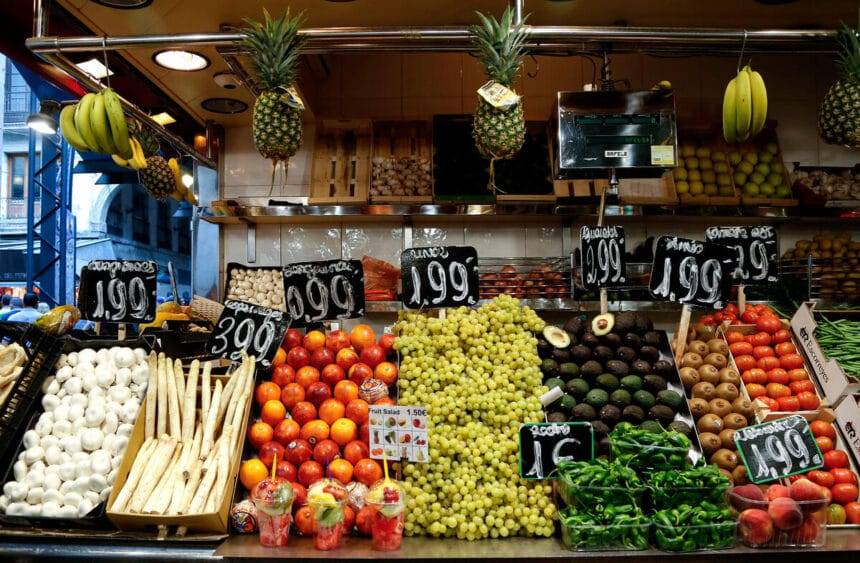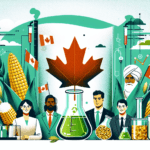Main Points In Hindi (मुख्य बातें – हिंदी में)
मुख्य बिंदु:
-
छिपी लागत का अनुमान: संयुक्त राष्ट्र के खाद्य और कृषि संगठन (एफएओ) की रिपोर्ट के अनुसार, वैश्विक कृषि खाद्य प्रणालियों में छिपी लागत लगभग 12 ट्रिलियन डॉलर सालाना है, जिसमें से 70% अस्वास्थ्यकर आहार पैटर्न से जुड़ी है।
-
आहार संबंधी जोखिम और स्वास्थ्य प्रभाव: रिपोर्ट में 13 आहार संबंधी जोखिम कारकों की पहचान की गई है, जैसे कि साबुत अनाज, फल, और सब्जियों का अपर्याप्त सेवन, जो विभिन्न कृषि खाद्य प्रणालियों के बीच भिन्न होते हैं।
-
कृषि खाद्य प्रणाली की टाइपोलॉजी: अध्ययन ने कृषि खाद्य प्रणालियों को छह वर्गों में विभाजित किया है (जैसे दीर्घकालिक संकट, पारंपरिक, औद्योगिक आदि) और उनके अलग-अलग परिणामों और छिपी लागतों का विश्लेषण किया है।
-
पर्यावरणीय और सामाजिक लागतें: अध्ययन में बताया गया है कि औद्योगिक और विविध कृषि खाद्य प्रणालियाँ महत्वपूर्ण पर्यावरणीय लागतों का सामना करती हैं, जबकि पारंपरिक प्रणालियों में गरीबी और अल्पपोषण जैसी सामाजिक लागतें अधिक प्रचलित हैं।
- सामूहिक कार्रवाई का आह्वान: रिपोर्ट ने टिकाऊ और समावेशी कृषि खाद्य प्रणालियों के लिए सामूहिक कार्रवाई की आवश्यकता को प्रमुखता दी है, जिसमें विभिन्न हितधारकों को छिपी लागतों को पहचानने और उन्हें कम करने के लिए संगठित रूप से काम करने का सुझाव दिया गया है।
Main Points In English(मुख्य बातें – अंग्रेज़ी में)
Here are the main points from the provided text:


-
Hidden Costs of Global Agricultural Systems: A comprehensive study by the Food and Agriculture Organization (FAO) estimates that the hidden costs within global agricultural food systems amount to approximately $12 trillion annually, with about 70% ($8.1 trillion) attributed to unhealthy dietary patterns, which contribute to severe non-communicable diseases (NCDs) and environmental degradation.
-
Diverse Agricultural Food Systems: The report categorizes agricultural food systems into six groups, highlighting the unique challenges and opportunities each presents. This classification allows for tailored understanding and the development of appropriate policies to address them.
-
Impact of Dietary and Environmental Factors: The study identifies various dietary risk factors, emphasizing insufficient consumption of whole grains, fruits, and vegetables, particularly in traditional and long-term crisis systems. It also addresses environmental costs related to agricultural practices, which can be substantial in regions with diverse systems.
-
Call for Collective Action: The report emphasizes the need for collective action among all stakeholders involved in agricultural systems, including farmers, governments, international organizations, and consumers, to drive sustainable changes and recognize the social value of food systems.
- Key Recommendations for Improvement: The report suggests actionable recommendations such as promoting sustainable practices in food supply chains, creating policies that make healthy diets more affordable, and empowering consumers with clear information about the impact of food options. It advocates for a comprehensive approach to mitigate hidden costs associated with food systems.
Complete News In Hindi(पूरी खबर – हिंदी में)
रोम – संयुक्त राष्ट्र के खाद्य और कृषि संगठन (एफएओ) द्वारा 156 देशों को शामिल करते हुए एक परिष्कृत अध्ययन इस बात की पुष्टि करता है कि वैश्विक कृषि खाद्य प्रणालियों के भीतर छिपी लागत सालाना लगभग 12 ट्रिलियन डॉलर है। इस आंकड़े में से, लगभग 70 प्रतिशत ($8.1 ट्रिलियन) अस्वास्थ्यकर आहार पैटर्न से उत्पन्न होते हैं और हृदय रोग, स्ट्रोक और मधुमेह जैसी खतरनाक गैर-संचारी बीमारियों (एनसीडी) से जुड़े होते हैं, जो पर्यावरणीय गिरावट और सामाजिक असमानताओं से संबंधित लागत से कहीं अधिक है।
खाद्य और कृषि राज्य 2024 (एसओएफए), इसी पर आधारित है 2023 संस्करण और भी अधिक गहन विश्लेषण प्रदान करने के लिए, उपयोग करना वास्तविक लागत लेखांकन खाद्य उत्पादन, वितरण और उपभोग से जुड़ी लागतों और लाभों की पूरी श्रृंखला को उजागर करना, जिसमें वे लागतें भी शामिल हैं जो बाजार की कीमतों में प्रतिबिंबित नहीं होती हैं – तथाकथित “छिपी हुई लागत और लाभ”। रिपोर्ट उन लागत अनुमानों को अद्यतन करती है, उन्हें कृषि खाद्य प्रणाली के प्रकारों से विभाजित करती है, और हमारे कृषि खाद्य प्रणालियों में परिवर्तनकारी परिवर्तन के लिए एक पाठ्यक्रम तैयार करती है।
अध्ययन में बताया गया है कि ऊपरी-मध्यम और उच्च आय वाले देशों में अधिक औद्योगिक कृषि खाद्य प्रणालियों में वैश्विक छिपी हुई लागतें बड़े पैमाने पर स्वास्थ्य छिपी लागतों से प्रेरित होती हैं, इसके बाद पर्यावरणीय छिपी लागतें होती हैं।
स्वास्थ्य प्रभावों की जांच में, रिपोर्ट 13 आहार संबंधी जोखिम कारकों की पहचान करती है। इनमें साबुत अनाज, फल और सब्जियों का अपर्याप्त सेवन शामिल है; अत्यधिक सोडियम की खपत; और लाल और प्रसंस्कृत मांस का अधिक सेवन, विभिन्न कृषि खाद्य प्रणालियों में उल्लेखनीय अंतर के साथ।
छिपी हुई लागत कृषि खाद्य प्रणालियों के प्रकार के आधार पर भिन्न होती है
ऐतिहासिक रूप से, कृषि खाद्य प्रणालियाँ पारंपरिक से औद्योगिक में परिवर्तित हो गई हैं, प्रत्येक के अलग-अलग परिणाम और छिपी हुई लागतें हैं। इस कारण से, रिपोर्ट यह पता लगाती है कि दुनिया भर में विभिन्न कृषि खाद्य प्रणाली प्रकारों में छिपी हुई लागतें कैसे प्रकट होती हैं।
विश्लेषण को सुविधाजनक बनाने के लिए, अनुसंधान एक टाइपोलॉजी प्रस्तुत करता है जो कृषि खाद्य प्रणालियों को छह अलग-अलग समूहों में वर्गीकृत करता है: दीर्घकालिक संकट, पारंपरिक, विस्तार, विविधीकरण, औपचारिक और औद्योगिक। यह ढांचा प्रत्येक प्रणाली में निहित अद्वितीय चुनौतियों और अवसरों की लक्षित समझ की अनुमति देता है, जिससे अनुरूप नीतियों और हस्तक्षेपों के विकास को सक्षम किया जा सकता है।
उदाहरण के लिए, जबकि अधिकांश कृषि खाद्य प्रणालियों में साबुत अनाज की कम मात्रा वाला आहार प्रमुख आहार जोखिम कारक है, दीर्घकालिक संकट प्रणालियों (जो लंबे समय तक संघर्ष, अस्थिरता और व्यापक खाद्य असुरक्षा का सामना कर रहे हैं) और पारंपरिक प्रणालियों (कम उत्पादकता, सीमित प्रौद्योगिकी अपनाने की विशेषता) में, और छोटी मूल्य श्रृंखलाएं), प्राथमिक चिंता फलों और सब्जियों का कम सेवन है।
उच्च सोडियम सेवन एक और महत्वपूर्ण चिंता का विषय है, जैसे-जैसे कृषि खाद्य प्रणालियाँ पारंपरिक से औपचारिकीकरण की ओर विकसित होती हैं, बाद में चरम पर पहुँचती हैं और फिर औद्योगिक प्रणालियों में घटती जाती हैं, यह ऊपर की ओर प्रवृत्ति प्रदर्शित करती है। इसके विपरीत, पारंपरिक से औद्योगिक प्रणालियों में संक्रमण के दौरान प्रसंस्कृत और लाल मांस की उच्च खपत लगातार बढ़ रही है, जहां यह शीर्ष तीन आहार जोखिमों में से एक है।
आहार संबंधी जोखिमों के अलावा, अस्थिर कृषि पद्धतियों का पर्यावरणीय प्रभाव छिपी हुई लागत के बोझ में महत्वपूर्ण योगदान देता है। विविध कृषि-खाद्य प्रणालियों वाले देशों में ग्रीनहाउस गैस उत्सर्जन, नाइट्रोजन अपवाह, भूमि-उपयोग परिवर्तन और जल प्रदूषण से जुड़ी लागत विशेष रूप से अधिक है – जहां तेजी से आर्थिक विकास के साथ-साथ खपत और उत्पादन पैटर्न विकसित होते हैं – अनुमानित $ 720 बिलियन तक पहुंच जाते हैं। औपचारिकीकरण और औद्योगिक कृषि खाद्य प्रणालियों को भी महत्वपूर्ण पर्यावरणीय लागतों का सामना करना पड़ता है। हालाँकि, लंबे समय तक संकट का सामना करने वाले देशों को सबसे अधिक सापेक्ष पर्यावरणीय लागत वहन करनी पड़ती है, जो उनके सकल घरेलू उत्पाद के 20 प्रतिशत के बराबर है।
गरीबी और अल्पपोषण सहित सामाजिक लागतें, पारंपरिक कृषि-खाद्य प्रणालियों और दीर्घकालिक संकटों से प्रभावित लोगों में सबसे अधिक प्रचलित हैं। ये सामाजिक लागतें क्रमशः सकल घरेलू उत्पाद का 8 और 18 प्रतिशत दर्शाती हैं, जो बेहतर आजीविका और एकीकृत मानवीय, विकास और शांति निर्माण प्रयासों की तत्काल आवश्यकता पर प्रकाश डालती हैं।
SOFA 2024 स्थानीय संदर्भों को अपनाने और हितधारक प्राथमिकताओं को पकड़ने के महत्व को रेखांकित करता है। इसे ऑस्ट्रेलिया, ब्राज़ील, कोलंबिया, इथियोपिया, भारत और यूनाइटेड किंगडम सहित विभिन्न देशों और कृषि खाद्य प्रणाली प्रकारों का प्रतिनिधित्व करने वाले केस अध्ययनों के माध्यम से चित्रित किया गया है।
सामूहिक कार्रवाई का आह्वान
कुल मिलाकर, रिपोर्ट कृषि खाद्य प्रणालियों को अधिक टिकाऊ, लचीला, समावेशी और कुशल बनाने के लिए मूल्य-संचालित परिवर्तन का आह्वान करती है। इसके लिए छिपी हुई लागतों को पहचानने के लिए वास्तविक लागत लेखांकन का उपयोग करके जीडीपी जैसे पारंपरिक आर्थिक उपायों से परे जाने की आवश्यकता है। इस दृष्टिकोण के साथ, निर्णयकर्ता अधिक सूचित विकल्प चुन सकते हैं जो खाद्य सुरक्षा, पोषण, जैव विविधता संरक्षण और सांस्कृतिक पहचान में उनकी आवश्यक भूमिकाओं को स्वीकार करते हुए कृषि खाद्य प्रणालियों के सामाजिक मूल्य को बढ़ाते हैं। इस परिवर्तन को प्राप्त करने के लिए क्षेत्रीय विभाजनों को पाटना, स्वास्थ्य, कृषि और पर्यावरण में नीतियों को संरेखित करना और यह सुनिश्चित करना भी आवश्यक है कि लाभ और लागत सभी हितधारकों के बीच समान रूप से साझा किए जाएं।
”अब हम जो विकल्प चुनते हैं, जो प्राथमिकताएं हम तय करते हैं और जो समाधान हम लागू करते हैं, वे हमारे साझा भविष्य को निर्धारित करेंगे। वास्तविक परिवर्तन व्यक्तिगत कार्यों और पहलों से शुरू होता है, जो सक्षम नीतियों और लक्षित निवेशों द्वारा समर्थित होते हैं। वैश्विक कृषि खाद्य प्रणालियों का परिवर्तन एसडीजी को प्राप्त करने और सभी के लिए समृद्ध भविष्य सुरक्षित करने के लिए मौलिक है, ”एफएओ के महानिदेशक क्यूयू डोंगयु ने कहा।
रिपोर्ट इस बात पर जोर देती है कि इस परिवर्तन के लिए सामूहिक कार्रवाई की आवश्यकता है, जिसमें प्राथमिक उत्पादक, कृषि व्यवसाय, सरकारें, वित्तीय संस्थान, अंतर्राष्ट्रीय संगठन और उपभोक्ता शामिल हों। जबकि छिपी हुई लागतों को संबोधित करने से हितधारकों, देशों और समय-सीमाओं पर असमान प्रभाव पड़ेगा, सहायक नीतियां और नियम स्थायी प्रथाओं को शीघ्र अपनाने और कमजोर सामाजिक समूहों की रक्षा करके, विशेष रूप से छोटे पैमाने के उत्पादकों और कृषि व्यवसायों के लिए व्यवधानों को कम करने में मदद कर सकते हैं।
प्रमुख सिफ़ारिशों में शामिल हैं:
- खाद्य आपूर्ति श्रृंखला के साथ टिकाऊ प्रथाओं को अपनाने को आगे बढ़ाने और कृषि खाद्य प्रणाली हितधारकों के बीच बिजली असंतुलन को सीमित करने के लिए वित्तीय और नियामक प्रोत्साहन प्रदान करना।
- ऐसी नीतियां बनाकर स्वस्थ आहार को बढ़ावा देना जो पौष्टिक भोजन को अधिक किफायती और सुलभ बनाती हैं और स्वास्थ्य संबंधी छिपी हुई लागत को कम करती हैं।
- लेबलिंग और प्रमाणीकरण, स्वैच्छिक मानकों और उद्योग-व्यापी उचित परिश्रम पहलों के माध्यम से ग्रीनहाउस गैस और नाइट्रोजन उत्सर्जन, हानिकारक भूमि-उपयोग परिवर्तन और जैव विविधता हानि में कटौती को प्रोत्साहित करना।
- भोजन विकल्पों के पर्यावरणीय, सामाजिक और स्वास्थ्य प्रभावों के बारे में स्पष्ट, सुलभ जानकारी के साथ उपभोक्ताओं को सशक्त बनाना, जबकि यह सुनिश्चित करना कि कमजोर परिवार भी बदलाव से लाभान्वित हो सकें।
- व्यापक खाद्य और पोषण शिक्षा के साथ मिलकर, खाद्य आपूर्ति श्रृंखलाओं को नया आकार देने और खाद्य वातावरण में सुधार करने के लिए संस्थानों के माध्यम से खाद्य खरीद की महत्वपूर्ण क्रय शक्ति का उपयोग करना।
- समावेशी ग्रामीण परिवर्तन को सुनिश्चित करना जो कि परिवर्तन के दौरान पर्यावरण, सामाजिक और स्वास्थ्य की छिपी हुई लागतों को बिगड़ने से बचाने के लिए कुछ ऐतिहासिक पैटर्न को आगे बढ़ाता है।
- टिकाऊ और न्यायसंगत कृषि खाद्य प्रणालियों के लिए नवाचारों में तेजी लाने के लिए एक सक्षम वातावरण बनाने के लिए शासन और नागरिक समाज को मजबूत करना
SOFA के बारे में
SOFA रिपोर्ट FAO के अधिदेश से संबंधित विषयों का एक व्यापक वार्षिक अवलोकन है। यह उभरते विकास क्षेत्रों, जैसे कृषि खाद्य प्रणालियों और कृषि में डिजिटल प्रौद्योगिकियों पर जोर देता है।
यह पहली बार है कि प्रमुख प्रकाशन लगातार दो वर्षों तक एक ही विषय पर केंद्रित है, जो एक स्थायी भविष्य सुनिश्चित करने के लिए कृषि खाद्य प्रणाली परिवर्तन की तत्काल आवश्यकता पर प्रकाश डालता है।
Complete News In English(पूरी खबर – अंग्रेज़ी में)
Rome – A detailed study by the Food and Agriculture Organization (FAO) involving 156 countries confirms that the hidden costs within global agricultural food systems amount to nearly $12 trillion annually. Of this amount, around 70% ($8.1 trillion) arises from unhealthy dietary patterns linked to non-communicable diseases (NCDs) like heart disease, stroke, and diabetes, far surpassing costs related to environmental degradation and social inequalities.
The State of Food and Agriculture 2024 (SOFA) builds upon the 2023 edition and aims to provide deeper insights through real cost accounting, which highlights the complete range of costs and benefits associated with food production, distribution, and consumption, including those not reflected in market prices—referred to as “hidden costs and benefits.” This report updates cost estimates, categorizes them by types of agricultural food systems, and charts a course for transformative change in these systems.
The study shows that in upper-middle and high-income countries, hidden costs in more industrial agricultural food systems primarily stem from health-related factors, followed by environmental costs.
The report identifies 13 dietary risk factors, such as insufficient intake of whole grains, fruits, and vegetables; excessive sodium consumption; and high intake of red and processed meats, with significant variances across different agricultural food systems.
Hidden costs vary based on the type of agricultural food systems
Historically, agricultural food systems have evolved from traditional to industrial forms, each with distinct outcomes and hidden costs. Thus, the report examines how hidden costs manifest in various types of agricultural food systems worldwide.
To facilitate analysis, the research presents a typology categorizing agricultural food systems into six groups: long-term crisis, traditional, expansion, diversification, formal, and industrial. This framework allows for targeted understanding of the unique challenges and opportunities within each system, enabling the development of tailored policies and interventions.
For example, while a low intake of whole grains is a major dietary risk factor across most agricultural food systems, in long-term crisis systems (facing prolonged struggles, instability, and widespread food insecurity) and traditional systems (characterized by low productivity and limited technology adoption), the primary concern is actually the low intake of fruits and vegetables.
High sodium intake is another significant concern; as agricultural food systems transition from traditional to formalization, sodium levels peak and then decline in industrial systems, showing an upward trend. Conversely, during the shift from traditional to industrial systems, the consumption of processed and red meats continues to rise, making it one of the top three dietary risks.
In addition to dietary risks, the environmental impact of unsustainable agricultural practices contributes significantly to hidden costs. Countries with diverse agricultural-food systems face substantial costs associated with greenhouse gas emissions, nitrogen runoff, land-use changes, and water pollution—estimated to reach $720 billion—especially where rapid economic development alters consumption and production patterns. Both formal and industrial agricultural food systems encounter considerable environmental costs, but countries in long-term crises bear the highest relative environmental costs, amounting to 20% of their GDP.
Social costs, including poverty and undernourishment, are most prevalent among those affected by traditional agricultural-food systems and long-term crises. These social costs represent 8% and 18% of GDP, respectively, underscoring the urgent need for improved livelihoods and integrated humanitarian, development, and peace-building efforts.
SOFA 2024 emphasizes the importance of adapting to local contexts and capturing stakeholder priorities. This is illustrated through case studies from various countries like Australia, Brazil, Colombia, Ethiopia, India, and the United Kingdom, representing different agricultural food system types.
A Call for Collective Action
Overall, the report calls for value-driven changes to make agricultural food systems more sustainable, resilient, inclusive, and efficient. This requires moving beyond traditional economic measures like GDP to recognize hidden costs using real cost accounting. With this approach, decision-makers can make more informed choices that enhance the social value of agricultural food systems while recognizing their roles in food security, nutrition, biodiversity, and cultural identity. Achieving this change also necessitates bridging regional divides, aligning policies across health, agriculture, and environment sectors, and ensuring that costs and benefits are equitably shared among all stakeholders.
“The choices we make now, the priorities we set, and the solutions we implement will shape our shared future. Real change starts from individual actions and initiatives supported by enabling policies and targeted investments. Transforming global agricultural food systems is fundamental to achieving the SDGs and securing a prosperous future for all,” said FAO Director-General QU Dongyu.
The report emphasizes that collective action is necessary for this transformation, involving primary producers, agribusinesses, governments, financial institutions, international organizations, and consumers. Addressing hidden costs will have varying impacts on stakeholders, countries, and timelines, but supportive policies and regulations can help reduce disruptions, particularly for marginalized social groups, including small-scale producers and agribusinesses.
Key Recommendations Include:
- Promoting sustainable practices within the food supply chain and providing financial and regulatory incentives to limit power imbalances among agricultural food system stakeholders.
- Encouraging healthy diets through policies that make nutritious food more affordable and accessible, thereby reducing health-related hidden costs.
- Promoting reductions in greenhouse gas and nitrogen emissions, harmful land-use changes, and biodiversity loss through labeling, certification, voluntary standards, and industry-wide due diligence initiatives.
- Empowering consumers with clear, accessible information about the environmental, social, and health impacts of food choices while ensuring vulnerable families can also benefit from these changes.
- Using the purchasing power of institutions, along with extensive food and nutrition education, to reshape food supply chains and enhance food environments.
- Supporting inclusive rural transformation to avoid exacerbating hidden environmental, social, and health costs during the change process.
- Strengthening governance and civil society to create an enabling environment for accelerating innovations in sustainable and equitable agricultural food systems.
About SOFA
The SOFA report provides a comprehensive annual overview of topics related to the FAO’s mandate. It emphasizes emerging development areas, such as agricultural food systems and digital technologies in agriculture.
This is the first time that a major publication has focused on the same theme for two consecutive years, highlighting the urgent need for agricultural food system transformation to ensure a sustainable future.






